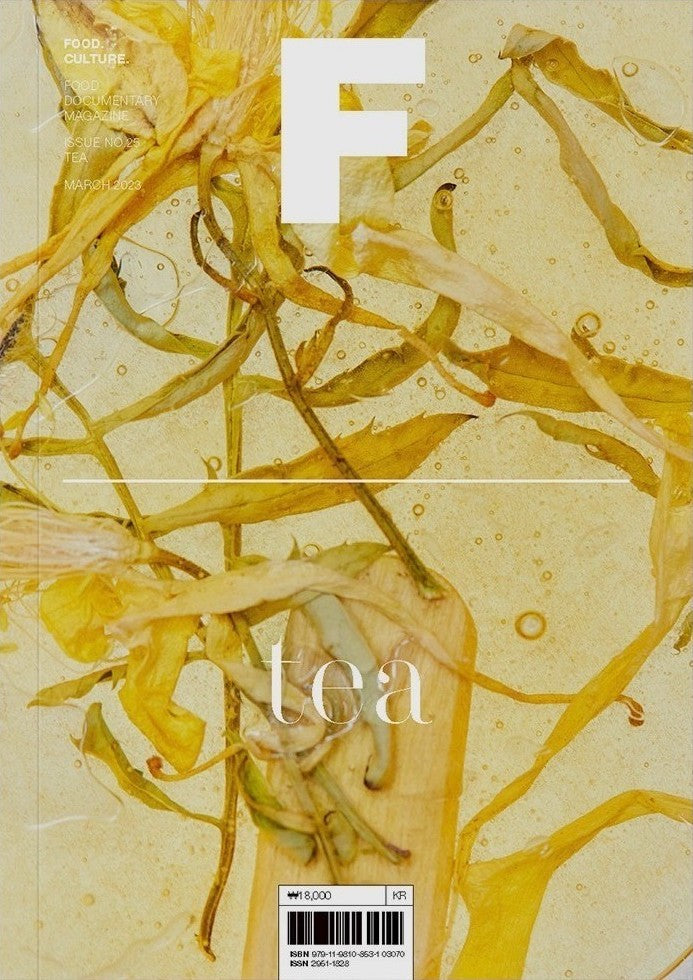


Magazine F Nº 25: Tea
Almost as old as water, TEA provides physical, mental and spiritual sustenance to billions, everywhere, everyday.
Tea, a drink made by brewing tea leaves in hot water, has developed into a unique favorite food based on its thousands of years of history, reflecting the culture of the region and the era. Strictly speaking, green, white, yellow, blue, and black tea made from the leaves of the tree belonging to the family Camellia sinensis are called teas. It is common to include substitute teas, flavored teas, and iced tea markets represented by herbal teas in the category of tea. In the oriental tea culture centered in Japan, China, and Taiwan, the afternoon tea culture developed mainly in the United Kingdom, not only drinks, but also tea tools, tableware, and sweets are naturally connected in a single ceremony and are considered a kind of comprehensive art. Since the pandemic, the demand for health-functional teas has increased, and they are rapidly becoming popular as wellness drinks.
